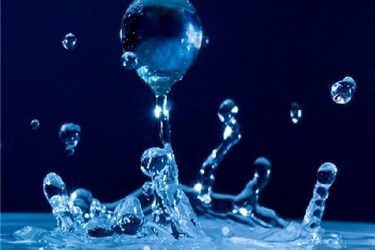Brewers Are Boosting Efficiency And Sustainability During Water Scarcity
By Isaac Fletcher, contributing writer, Food Online

With the era of cheap, abundant water coming to an end, brewers like MillerCoors and AB InBev are looking to facilities and supply chains to save water and improve sustainability
It takes about 300 barrels of water to produce one barrel of beer. While beer is 95 percent water, the remaining five percent, essentially barley and hops, requires vast amounts of water to produce.
In the case of MillerCoors, a 2008 internal operational audit revealed that three of its eight major breweries — located in central Texas, southern California, and Colorado — were already relying on water sources that were at risk of being overused. Additionally, many of the farms that supply the company’s barley operate in water-stressed areas of Colorado, Montana, Idaho, and Wyoming.
MillerCoors began implementing water conservation strategies — adding valves, sensors, and systems that reduce water usage — at all of its breweries, not just those suffering from water shortage. The company also looked to its supply chain to address inefficiencies in irrigation. In 2011, MillerCoors transformed a barley farm in southern Idaho into a working example of smart irrigation. A $1 million grant to the Nature Conservancy brought experts to the Idaho farm to test conservation technologies, install soil sensors with GPS satellite connections and smartphone applications, and improve other area of irrigation systems.
The improvements saved MillerCoors 270 million gallons in its first two years by allowing technology to add water only when it is needed. Realizing the success of its irrigation transformation at the Idaho farm, the company implemented the same model at other barley farms in distressed areas of Colorado, Montana, and Wyoming.
Other brewers have upped their sustainability efforts as well. Last year, AB InBev unveiled a set of seven five-year goals, three of which pertain to water. The company has committed to reducing its global water usage per barrel of beer by 2017, reducing water risks, and improving water management in key barley-growing regions.
Check out some other ways brewers are conserving resources
Like MillerCoors, AB InBev recognizes the water conservation effort must extend beyond its breweries and into its supply chain. The brewer is pursuing two approaches to improve water use at its barley suppliers. The first tactic is to disseminate the best farming practices, ensuring a higher standard of water efficiency is met. The second is to use high-yield, drought tolerant varieties of barley.
With the United Nations predicting by 2030 nearly half of the world population could face water scarcity as demand outstrips supply by 40 percent, water conservation will be more important than ever. Industries across the board, not just brewing and agriculture will need to up their conservation efforts. With the path to improvement already being revealed through knowledge and technology, other industries already possess the necessary tools to join the water sustainability effort.
